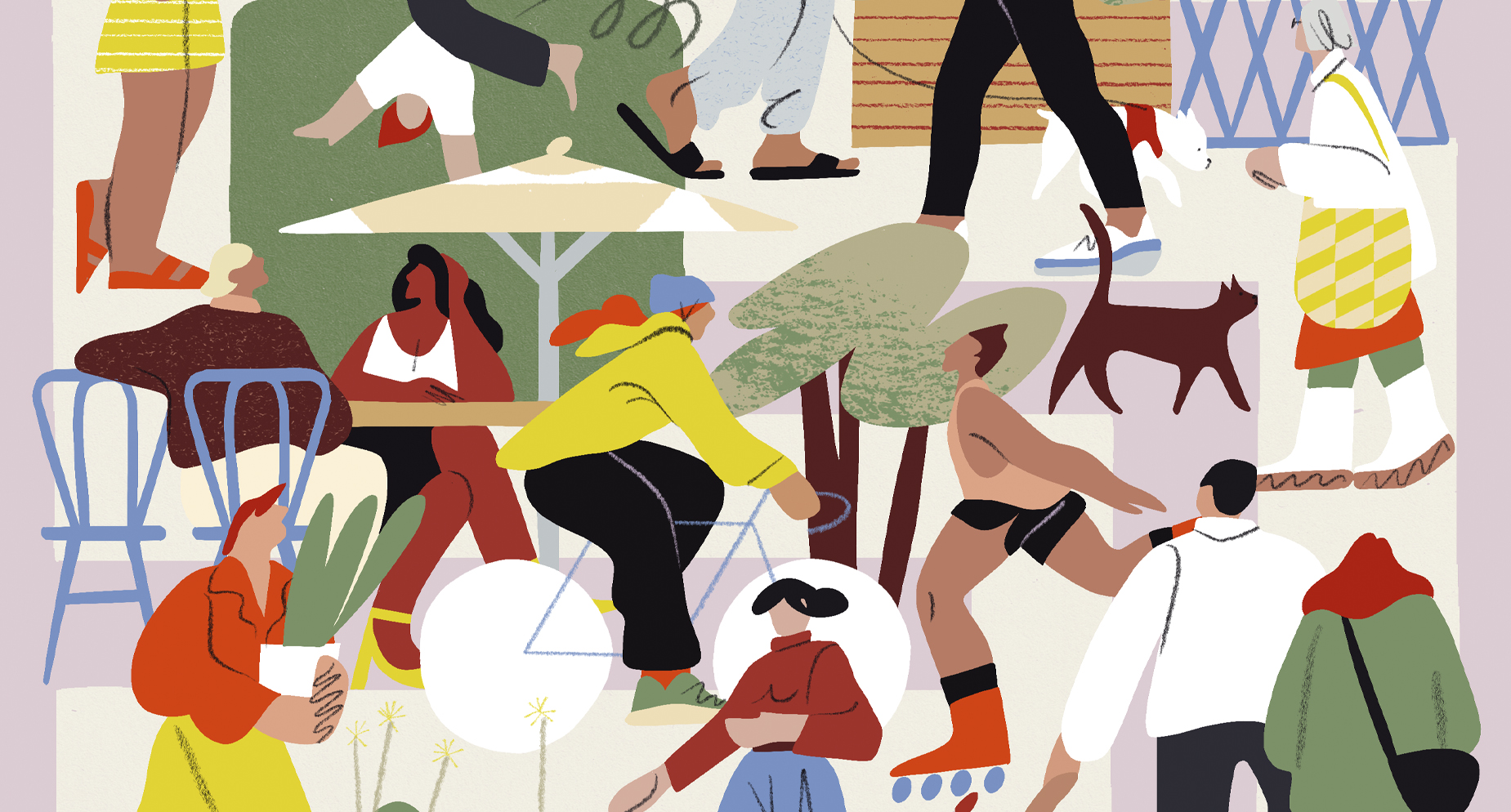“Proximal living is how our ancient cities evolved”, explains James Mant, former Director of Places and Precincts in the Victorian Department of Transport and Planning. “500 years ago in Italy, you simply wouldn’t or couldn’t walk that far, so towns evolved naturally around walking. Patterns of evolution changed as modes of transport improved, from horses and carts to cars, which explains why Australian and American cities are so spread out, as they were only developed in the last century when cars were already dominant.”
French-Colombian urbanist Carlos Moreno agrees, citing in his book, The 15-Minute City, that “Many modern cities were designed for men to work in. Their wives and family stayed in the suburbs, while the workers drove in. So they have been designed around the car, and segmented into different districts such as financial, cultural and the suburbs.”
In the last 10-15 years, broadly coinciding with the rise of sustainability and wellness, aspirations for 15 or 20-minute neighbourhoods have captured the attention of governments, urban planners and climate policy makers across the globe. Moreno first introduced the phrase “15-minute city” at COP21 in 2015 with a vision of cities that de-emphasised private car use and encouraged more walking to nearby amenities. Further afield, the 20-minute neighbourhoods principle also reflects North American planning concepts such as ‘complete communities’ or ‘new urbanism’, drawn particularly from Portland, Oregon.
These ideas were compounded by the global shock of the pandemic, when patterns of behaviour shifted dramatically and people walked, connected, shopped and socialised more locally, reshaping how people relate to local livability. Today, and partly due to the climate emergency, this way of thinking continues, with state governments taking ancient and human ways of thinking about cities and turning them into government policies. “We’re rediscovering things we actually knew,” says James Mant. “It’s cheaper to walk, it’s better for you and the environment, and it provides better equity.”
Melbourne joined the ‘global to local’ movement in 2018 with Plan Melbourne’s 20-Minute Neighbourhood Pilot Program, which assesses the viability of implementing such a concept among Melbourne’s metropolitan council areas. The principle centres around the localised living model – enabling access to safe cycling and local transport that makes all the essentials of day-to-day life available within a 20-minute round-trip from home.
“The interesting thing for us as urban designers is that it brings a ‘people and place-centric lens’ to creating and improving local communities,” says Orlando Harrison, Architect, Urban Designer and Director at urban design and masterplanning firm, UrbanFold. “It’s about the very human experience of our local neighbourhoods, having the right services, amenities, and social structures to enable us to each enjoy where we live.”
So how do we create 20-minute neighbourhoods and which places are getting it right? Plan Melbourne outlines six hallmarks and a set of features that are fundamental to creating livable places. Ideas such as ‘Local Schools’, ‘Lifelong Learning Opportunities’ and ‘Housing Diversity’ must all be within an 800m walkable catchment as research shows that 20-minutes is the maximum time people are willing to walk to meet their daily needs. Several Melbourne suburbs, such as East Melbourne, South Yarra, Kensington and Fitzroy rate highly on the livability scale, with schools, shops, green spaces and hospitals all in close proximity.
In 2020, Maribyrnong Council installed a temporary parklet in Ballarat Street, Yarraville, to help traders through pandemic restrictions. Previously a busy road, the pedestrian space in the heart of Yarraville Village is decked out in artificial grass, potted plants and colourful deck chairs shaded by umbrellas. It was so popular that in 2022, residents voted overwhelmingly in favour of adopting it permanently. More recently, the derelict Bradmill Denim Factory is set to be turned into a large-scale residential community with a new supermarket, specialty shops and an alfresco food and dining within walking distance of the new housing. “Yarraville is a great example of the small measures local councils and urban designers can make to vastly improve the lives of the community,” says Orlando Harrison. “Once you start and the community gets involved, that momentum tends to build and lead to bigger and better things.”
Large-scale adoption is slightly more complex. “There’s huge pressure for housing while, on the other side, the development industry is in trouble,” says James Mant. “We don’t have enough construction workers and the economy isn’t strong, so there are a lot of barriers to enablement. We need to think about how we make it easier for the development industry to develop in a way that delivers on the 20-minute neighbourhood.”
James’ mission is to enable the development of better places – well designed, walkable and timeless. His new business, StreetCo, is finding ways to help people do that. “We’ve been very successful with communication, education and advocacy – making the 20-minute neighbourhood approach easy to understand so that everyone gets what we’re trying to achieve. But all levels of government, from state to local councils, need to engage with the development industry to encourage building in this way. If we incentivise good design and fast track processes and approvals, it will encourage the building of more liveable, lovable and human-scaled cities, quicker.”
urbanfold.com.au
streetco.com.au
